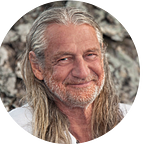How to Overcome Inadequate Parenting: Yoga and Freedom from Limits
Mark Whitwell | Heart of Yoga
Unless you are some kind of genius, there is no way that you can avoid absorbing your parent’s patterns.
And many of us have very real trauma in us by how we have been treated in our childhood. We may have received inadequate parenting from parents who themselves were traumatized in their childhood and who just passed on the patterning.
In our twenties, as we start to explore relationships and intimacy we may come across the revelation of some very painful contractions and emotions in the body and mind.
Our relationships with our beloved partner may get stuck as each other’s childhood obstructions limit the flow of intimacy.
Fear, doubt, confusion, and an inability to know what we truly want are signs that childhood patterning is clouding our perception. Our actions may not go so well or produce the desired result.
And so we suffer.
If we are brave enough to acknowledge the restriction that we feel however, then we are able to do something about it. We acknowledge that it is not a personal fault, but a mass social pathology of limit that is affecting everyone.
What can we do?
In indigenous wisdom culture in India and Tibet, Yoga was developed as the practical means for every individual to directly embrace the nurturing flow of reality itself, to move and breathe as the whole body, and to feel the wholeness, peace, and power of their life that is prior to social conditioning.
Our ancestors understood that the social patterning, habits of mind, and trauma (saṃskāra) of the everyday world and family life made it difficult for people to acknowledge themselves as the unlimited power and beauty of Life. The knowledge of our connection to Nature/Source and the recognition that we are Nature/Source could be lost.
So they developed simple practices that allowed people to participate in their Life. The goal of these practices was simple but magnificent: to establish an unending intimacy with infinity within everyday, ordinary existence.
These practices have come down to us today through the great scholar and Yogi Tirumalai Krishnamacharya (1888–1989) and his son TKV Desikachar (1936–2016).
Krishnamacharya demonstrated that when you move and breathe according to the specific principles of the wisdom traditions then the mind’s patterning, and the residue of childhood trauma from the past, falls away. You are able to see and feel clearly and move through life freely.
You are also then able to help others.
When I was a student of Desikachar’s in the 1970s he would always quote his father to me, “Mark, your experience of overcoming your own suffering is what equips you to help others.”
How does Yoga work?
Yoga is the unitary movement of body, breath, and mind. We begin our practice by establishing a smooth and even inhale and exhale — usually with ujjayi breath.
We then link the body movement to the breath movement — raising our arms to see the hands on the inhale, and lowering our arms to our sides on exhale. The inhale is from above first expanding the upper chest, and the exhale is from below beginning by drawing the abdominals in and up.
Finally, we let the breath envelope the movement — the breath begins slightly before we start moving, and ends slightly after we finish moving.
As we move and breathe in these easy and pleasurable ways, the mind automatically follows the breath. The mind becomes linked to the whole body. And the whole body is the power, peace, beauty, and harmony of Life itself, of Mother Nature, of God, if that is your culture.
The intelligence of Life clarifies the mind.
In that process of Yoga, of feeling the given wholeness and connectedness of life, there is a lifting off of the patterns and contractions of mind and body that make us feel so limited and stuck. The literal contractions and pain of our past are released in a natural and safe way.
As we practice for a short time each day, we start to feel connected to ourselves in a sublime way. And this sensitivity to ourselves naturally flows outwards to others — especially our intimate relationship to our special partner.
With the guidance of someone who cares for us, who understands Yoga, and who has had victory over their own limitations, we can completely finish with our childhood and adolescent patterns at the age of twenty-eight, or thereabouts.
We start to live in a new way as autonomous adults who are free from the habits of our parents and the society we were born into.
We can then honour our parents as the source of our life and be with them without a feeling of reactivity and restriction.
Don’t miss your chance to do this!
*To find a summary of the key principles that Krishnamacharya taught visit www.heartofyoga.com
- You might like to read my latest book God and Sex: Now We Get Both (2019) for further considerations on adult intimacy.
Read More:
